
Table of Contents
Scientific Classification
- Kingdom: Animalia
- Phylum: Chordata
- Class: Reptilia
- Order: Squamata
- Family: Boidae
- Genus: Boa
- Species: Boa constrictor
Quick Overview
The Common Boa Constrictor (Boa constrictor) is a remarkable and non-venomous snake, well-known for its beauty, large size, and intriguing behavior. Native to the Americas, these snakes have found popularity in the pet trade and among reptile enthusiasts.
Fast Facts
- Scientific Name: Boa constrictor
- Lifespan: Up to 30 years or more in captivity.
- Average Size: Varies greatly by subspecies, ranging from 5 to 13 feet.
- Diet: Carnivorous, primarily consuming small mammals and birds.
- Habitat: Diverse, found in a range of ecosystems, from rainforests to savannas.
Did you know?
Boa Constrictors are exceptional climbers and can be found resting in trees or shrubs during the day.
Appearance
Common Boa Constrictors exhibit a wide range of colors and patterns, with various subspecies showcasing distinct characteristics. They can be tan, brown, red, or even almost black, often adorned with saddles or blotches along their bodies. Their eyes possess a captivating iridescent quality.

Size and Weight
The size of a Common Boa Constrictor can vary significantly by subspecies. Some are relatively small at around 5-6 feet, while others, like the Boa constrictor constrictor, can reach lengths of 10 to 13 feet. Their weight can range from 5 to 60 pounds or more.
Temperament and Behavior
Boa Constrictors are generally known for their calm and gentle nature. They are less likely to bite than some other snake species and can be quite docile with proper handling. These snakes are primarily active during the dawn and dusk.
Fun Fact
Boa Constrictors possess heat-sensitive pits on their face, enabling them to detect the body heat of their prey and strike with remarkable accuracy, even in darkness.
Habitat and Distribution
Common Boa Constrictors are distributed throughout the Americas, from North America down to Argentina. Their adaptability allows them to thrive in various environments, including rainforests, grasslands, and even urban areas.
Care Guide
For prospective Common Boa Constrictor owners:
- Habitat: Provide a secure and appropriately sized enclosure with climbing structures and hiding spots.
- Temperature: Maintain a temperature gradient within the enclosure, with a warm side of 85-90°F (29-32°C) and a cool side of 75-80°F (24-27°C).
- Humidity: Keep the humidity level around 60-70% to replicate their natural habitat.
- Diet: Feed your Boa Constrictor with appropriately sized prey, such as rodents, every 1-4 weeks, depending on age and size.
- Health Check-ups: Regular veterinary check-ups are essential to ensure your snake’s well-being.
Diet and Nutrition
Boa Constrictors are carnivorous reptiles, primarily preying on small mammals and birds in the wild. In captivity, they are often fed a diet of frozen-thawed rodents, which provides balanced nutrition.
Health and Wellness
Providing a suitable habitat, monitoring temperature and humidity, and arranging for routine veterinary check-ups are essential to maintain the health of your Common Boa Constrictor.
Breeding
Breeding Common Boa Constrictors can be a complex but rewarding endeavor for experienced snake enthusiasts. Breeding usually occurs in the spring, with female Boa Constrictors giving birth to live young after a gestation period of several months.
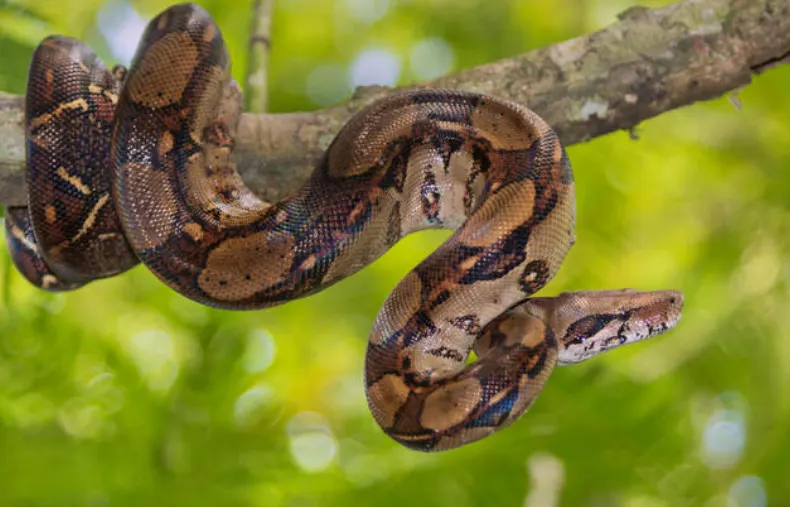
Conservation Status
Most subspecies of Boa Constrictors are not considered endangered. However, habitat destruction and collection for the pet trade have led to localized population declines. Conservation measures aim to protect these snakes in specific regions.
3 Amazing Facts About Common Boa Constrictor
- Live Birth: Unlike many other snakes, Boa Constrictors give birth to live young rather than laying eggs. The number of offspring can vary widely based on factors like the mother’s size and age.
- Distinct Markings: Common Boa Constrictors often have intricate, saddle-like patterns along their backs, which can be unique to each individual. These patterns help them blend into their natural surroundings and may vary in color and arrangement.
- Long Lifespan: With proper care, Common Boa Constrictors can live for several decades, making them a long-term commitment for snake enthusiasts.
Photo Gallery
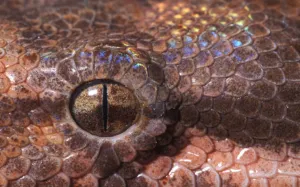
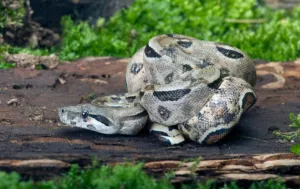
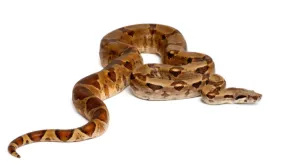
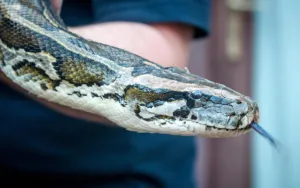
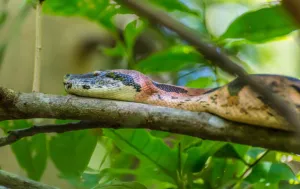
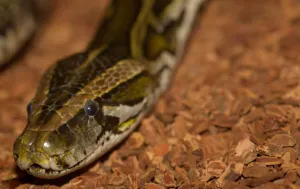
Related Profiles
Share This Profile:
- Enchi Ball Python: A Unique and Stunning Morph of Python regius - March 27, 2025
- Emerald Tree Monitor: The Enigmatic Green Guardian of the Rainforest - March 26, 2025
- The Egyptian Cobra (Naja haje): A Fascinating Serpent - March 25, 2025
